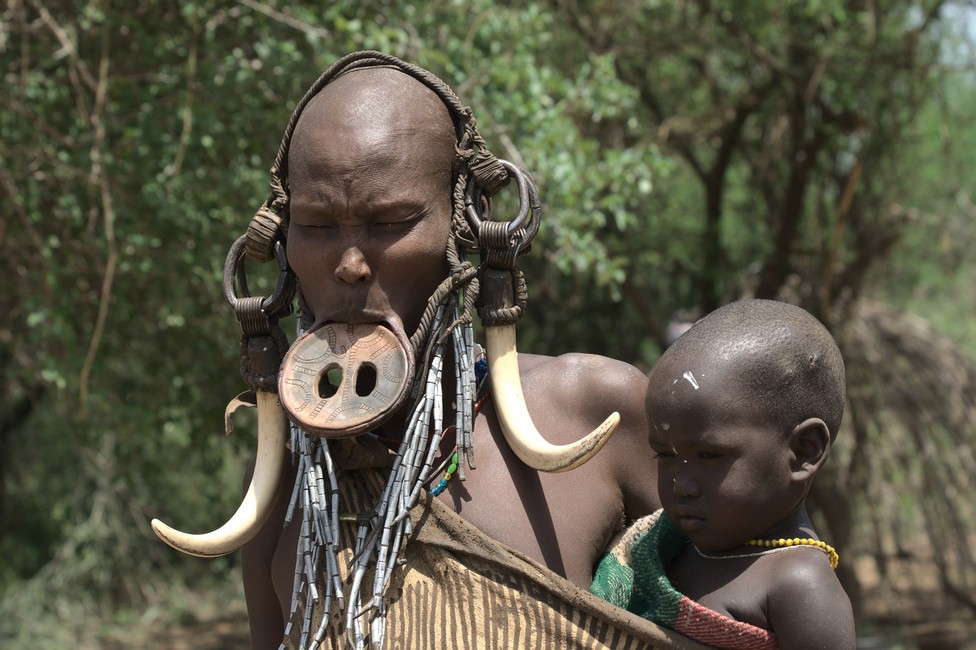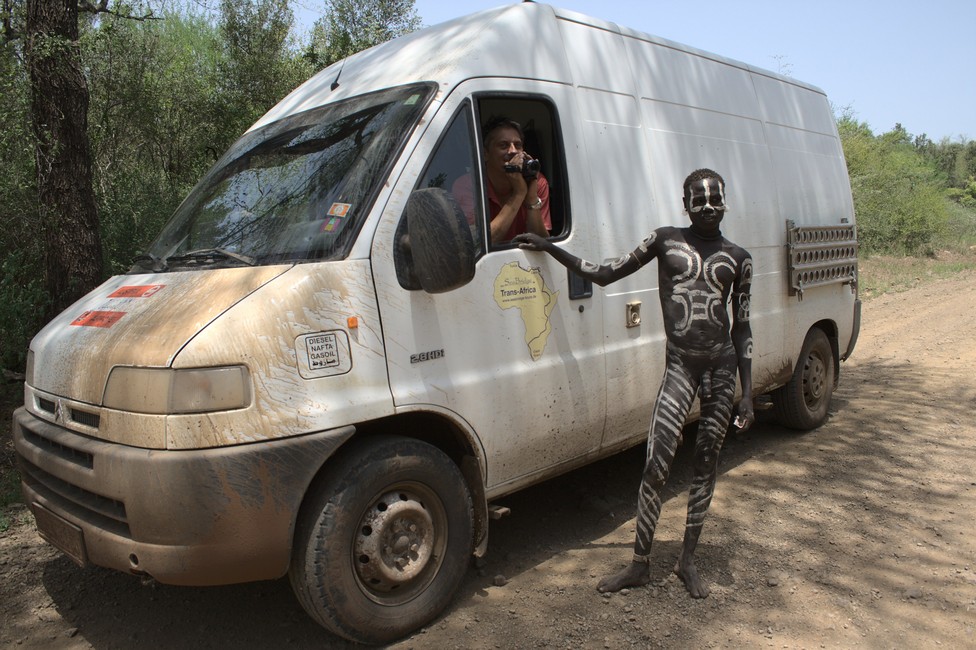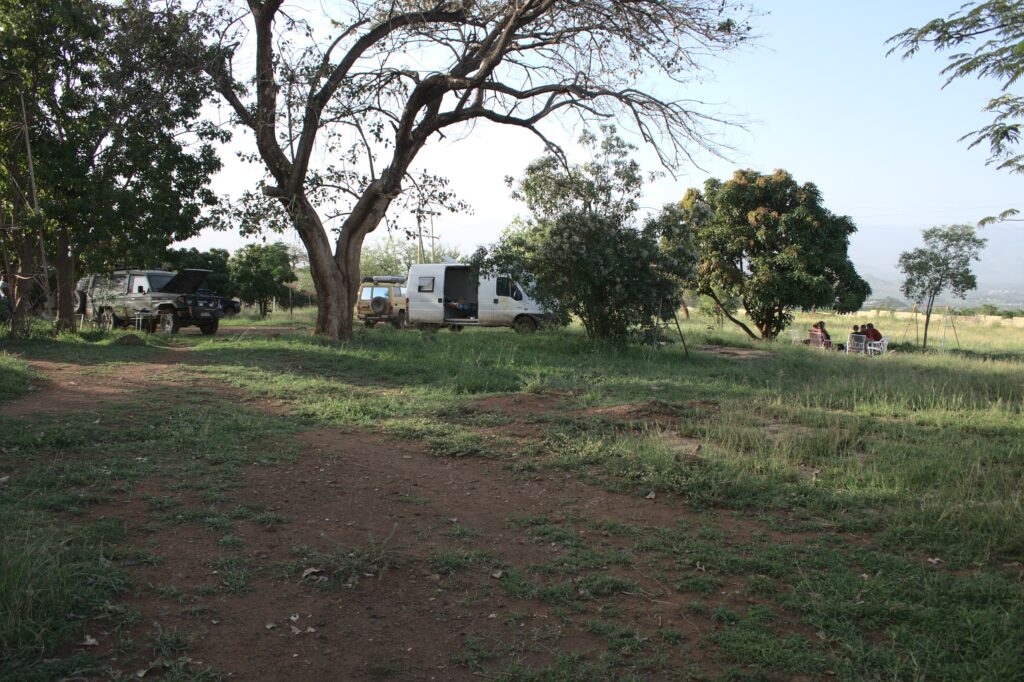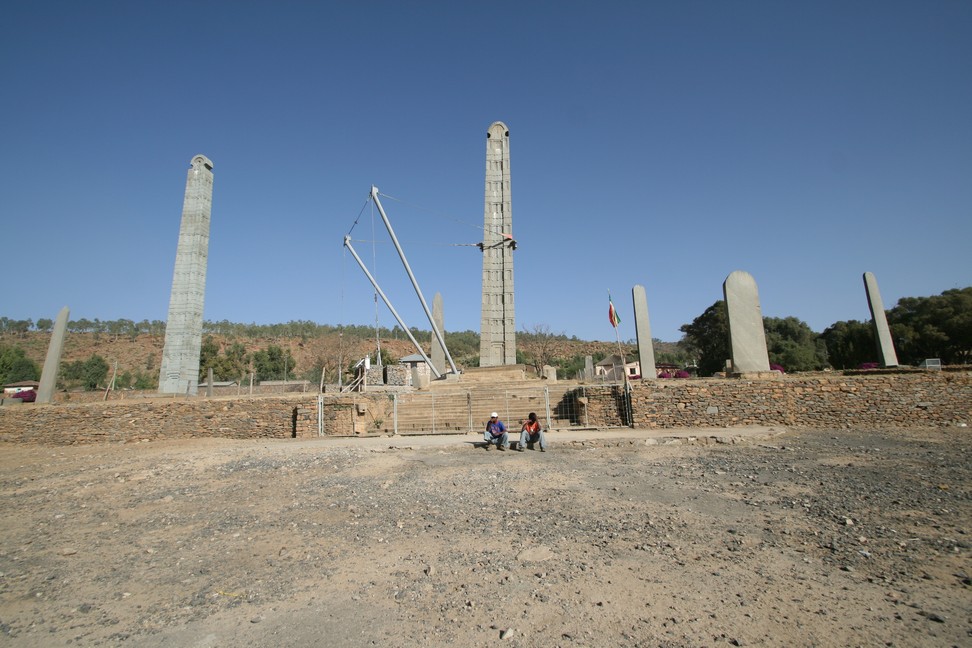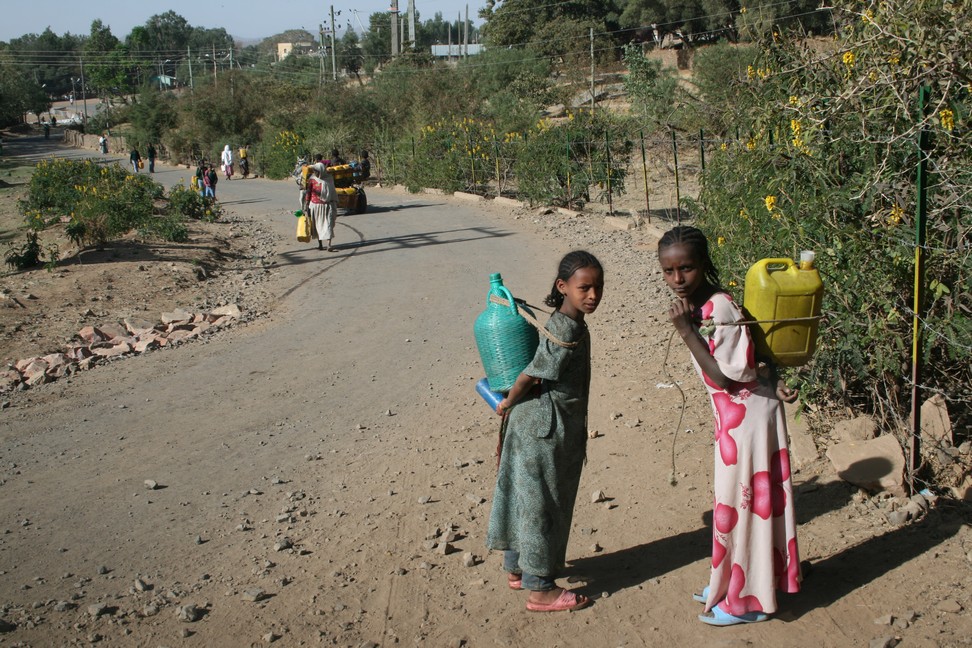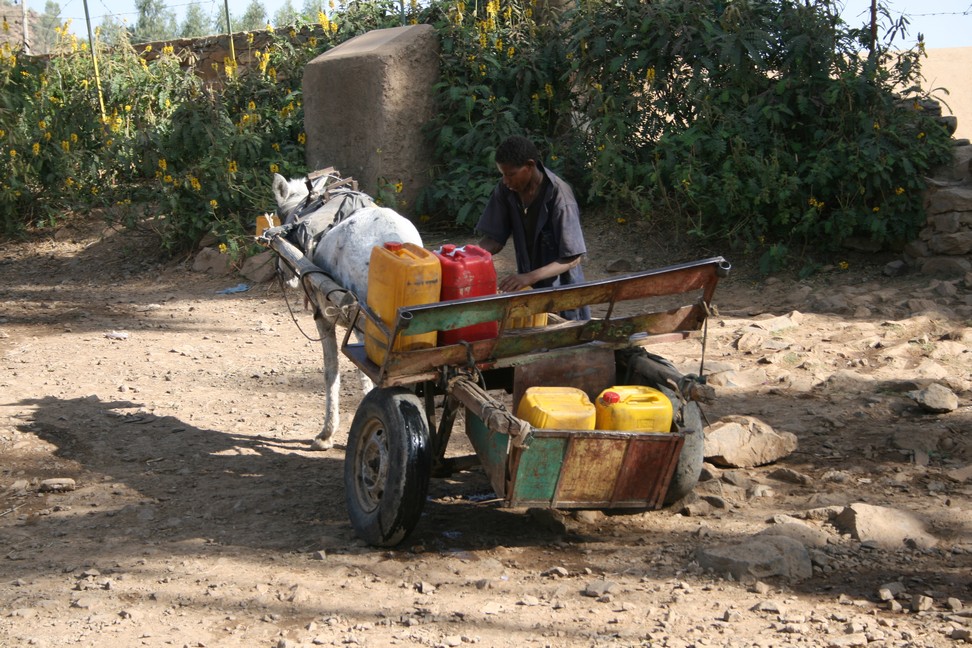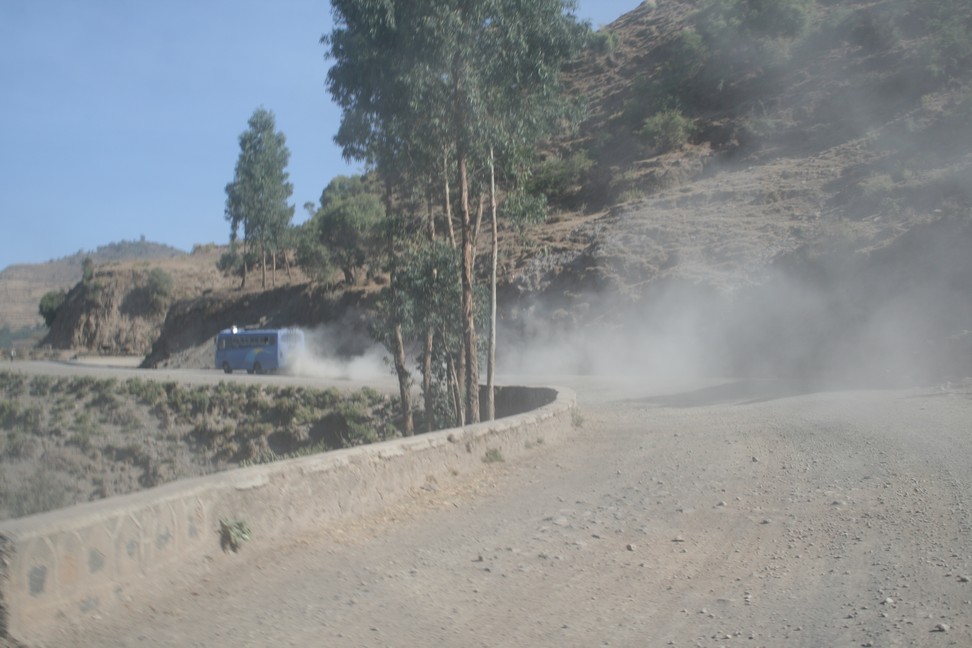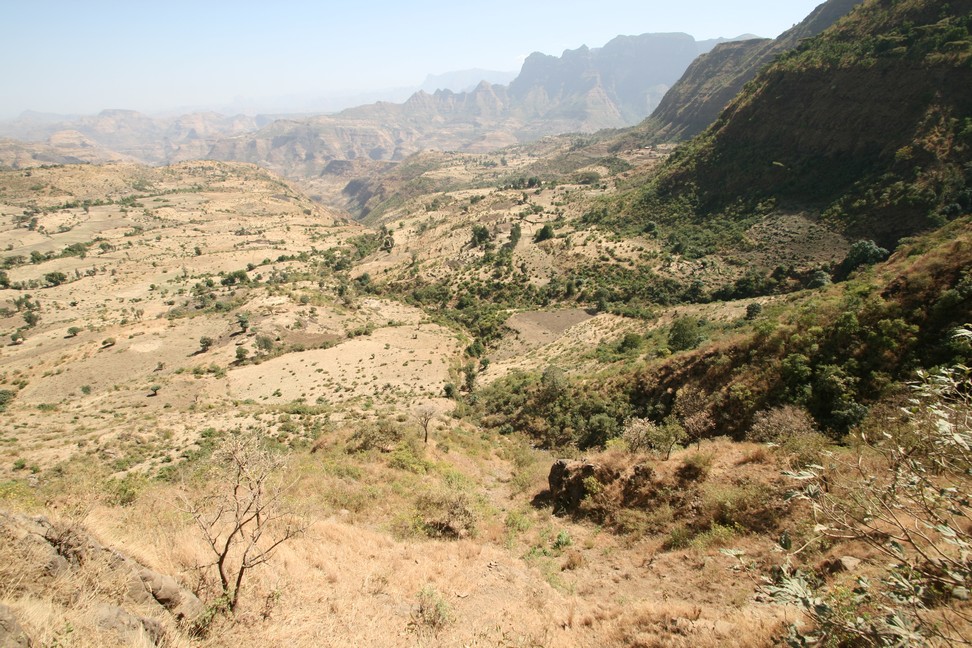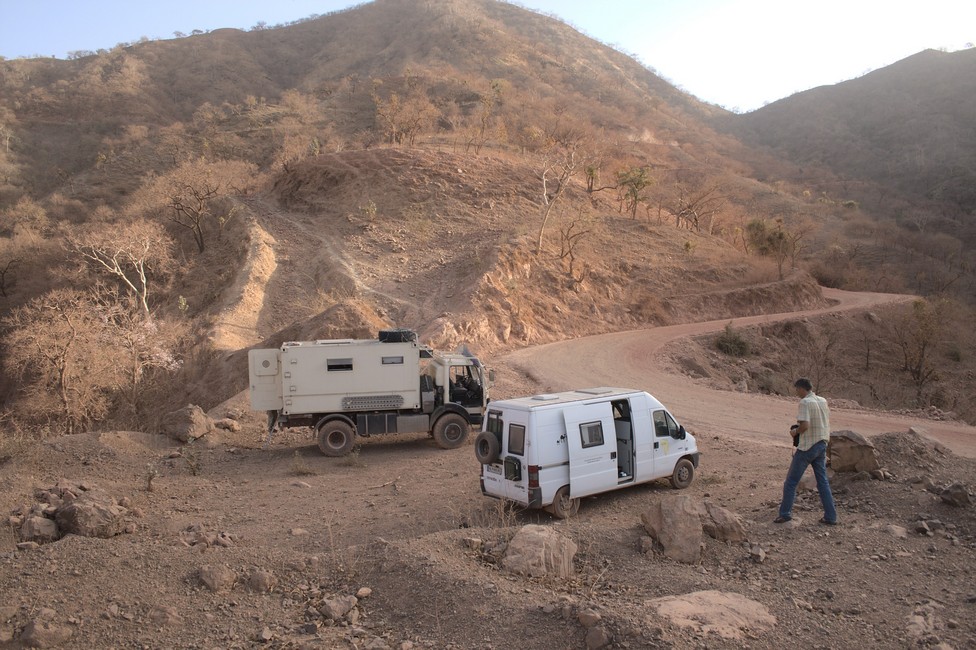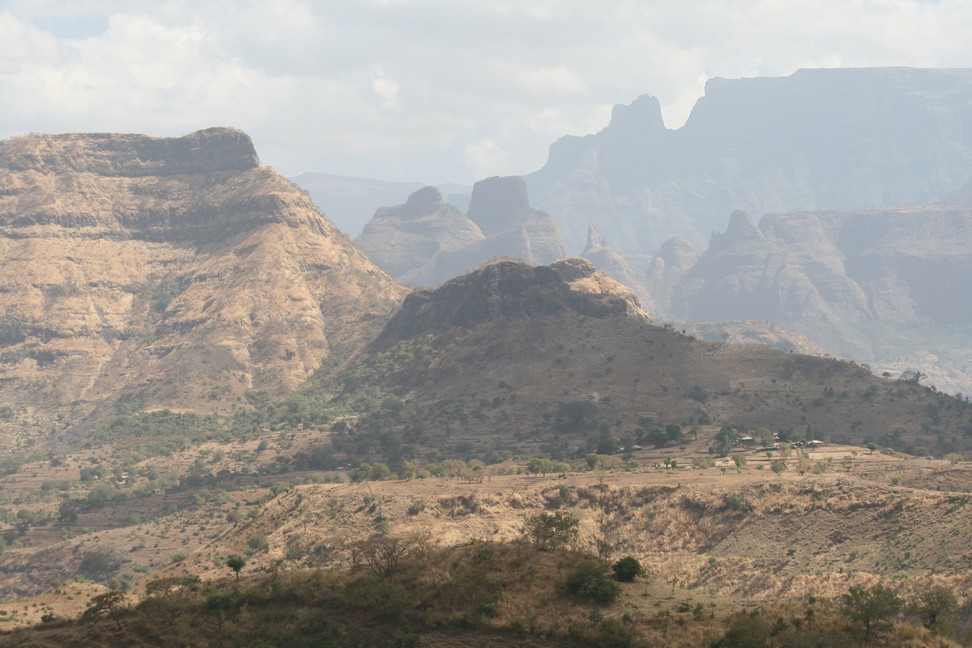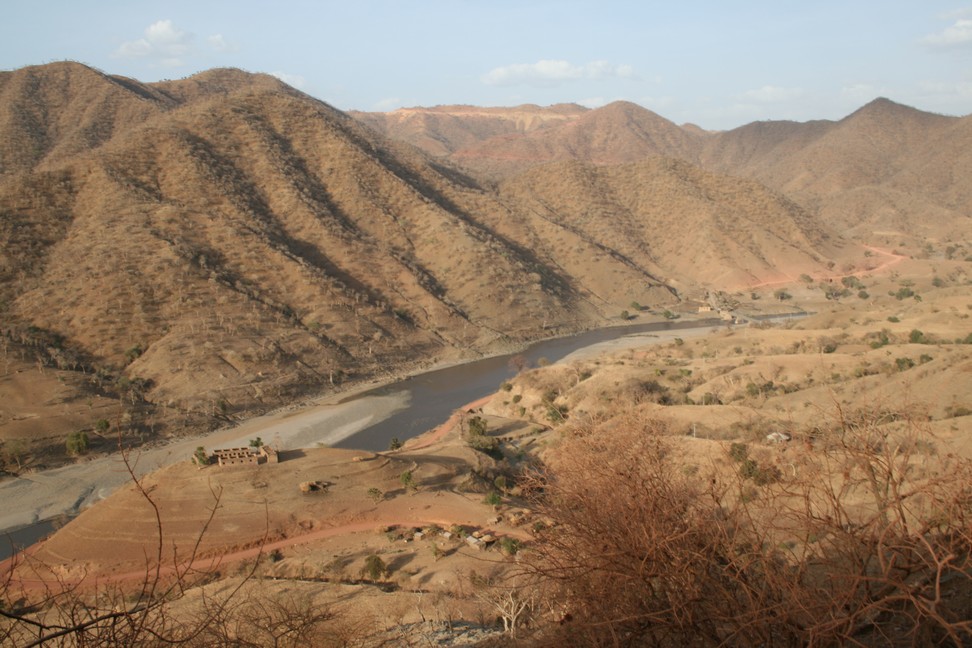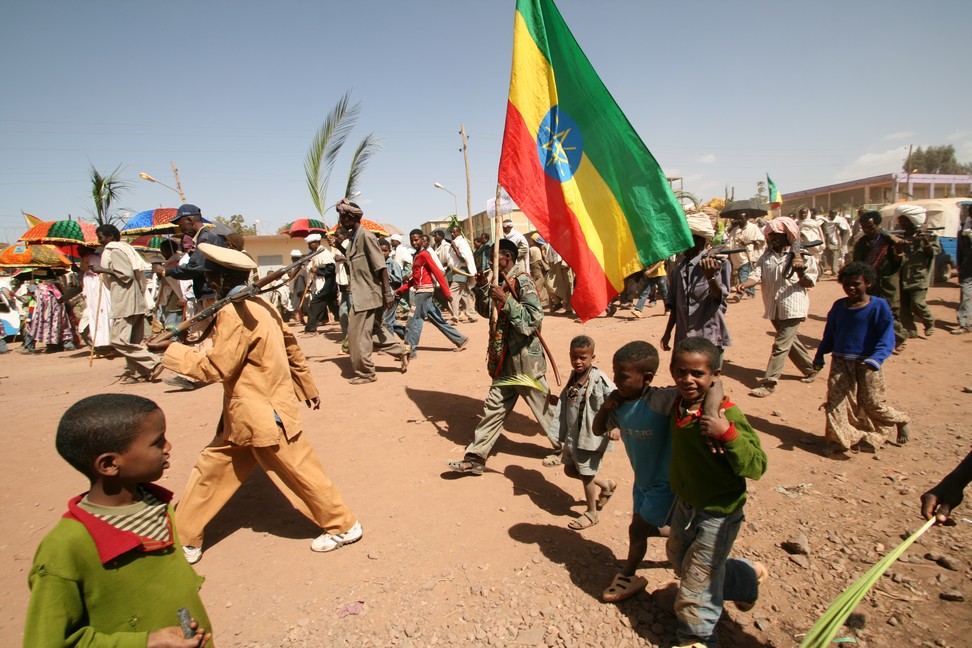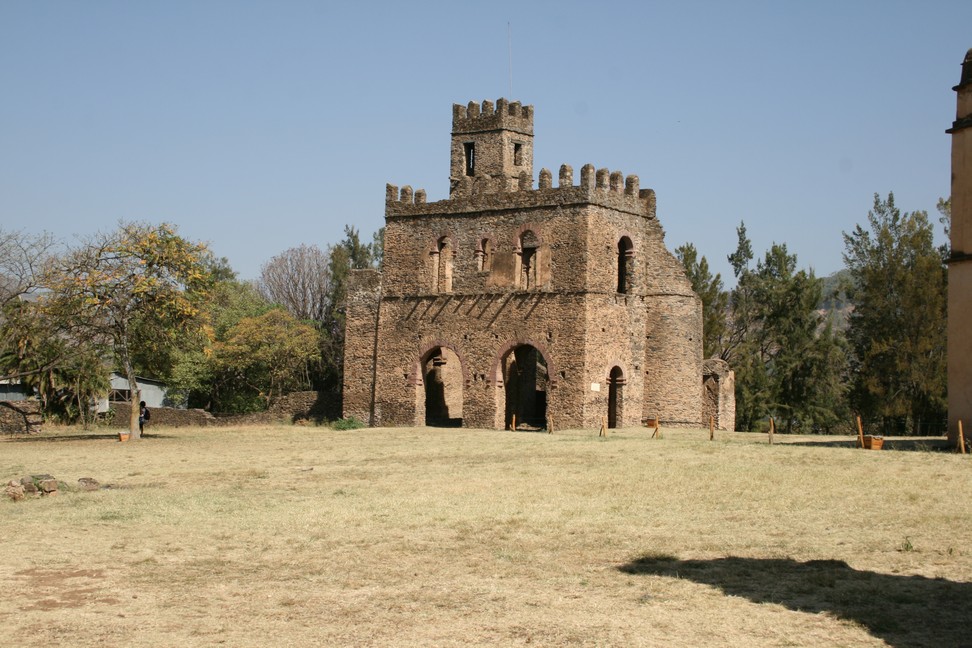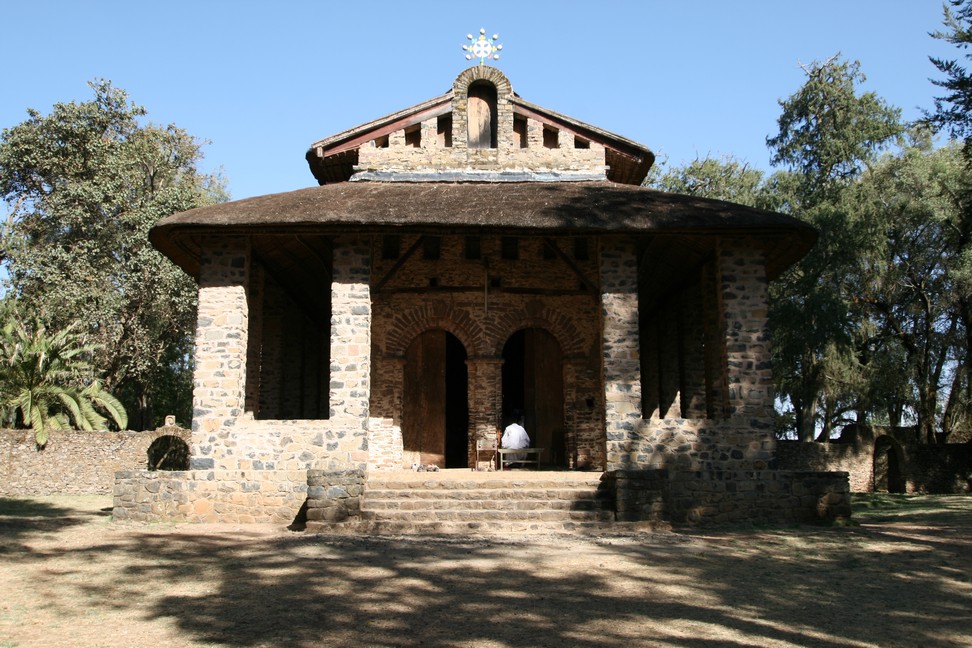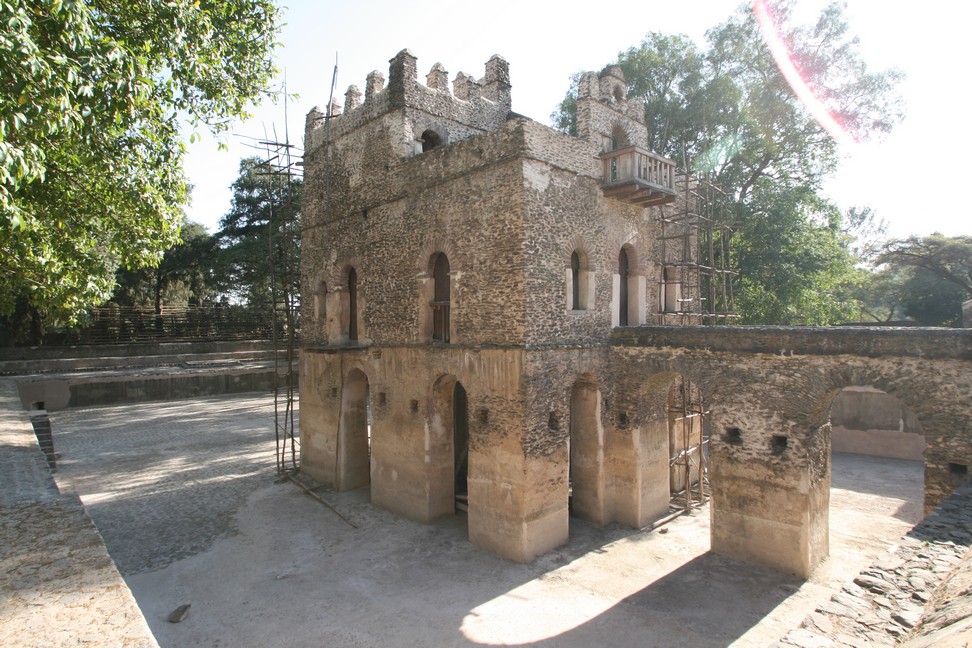We hear about the weekly market in Turmi. On the way back, we still encounter a group of young warriors. They are full body painted with beautiful patterns. Again, we must pay. With mixed feelings we leave the area, knowing that we have made our contribution to its possible demise. We cannot think a lot, because we already have caught up with reality. We do not get up a mountain, it is too steep, we are too heavy. Unloading also does not help. We try hard but ruin our front tires to the mesh. Blessing in disguise, a truck comes by, after long negotiations they tow us up the hill for 500 birr (about 37 U.S. dollars), 300 meters up the mountain.

Somewhat annoyed by the insolence we have no choice but to pay. Also, this is Africa.
Arriving at the hill we pack our rescue belt back again. From here there are no steep mountains more to Jinka. I wonder if I switch to the spare tire here, I decide against it, maybe the tires stay to Jinka, where I can change the tires at the camp. We also hope that we can get our dimension in Jinka, then we fit it to these rims.
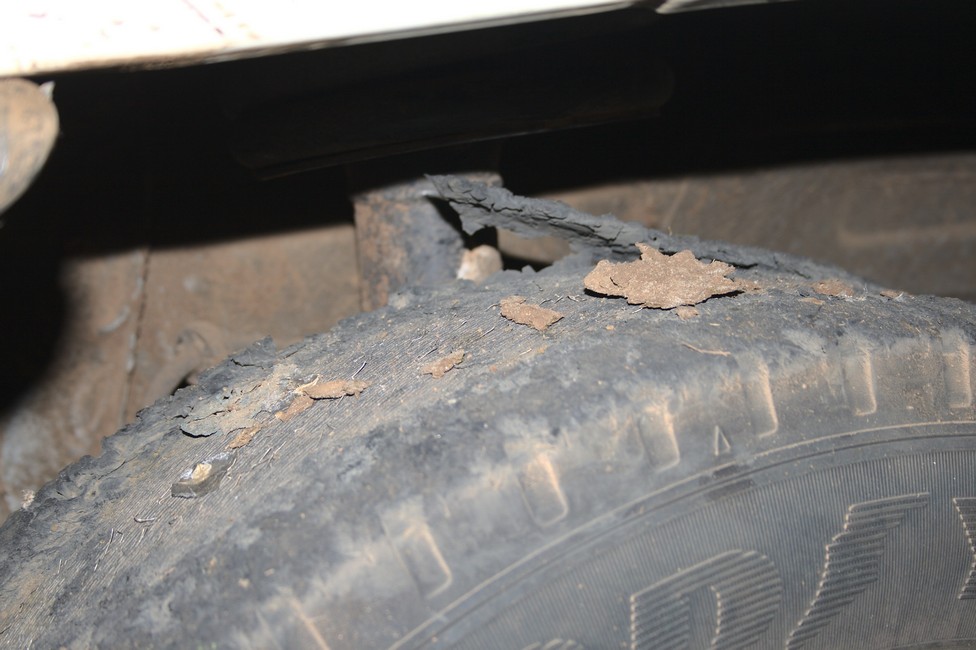
Annoyed and disappointed we drive on the wire meshes on to Jinka. It should be another 10 kilometers.
I have no idea whether we survive driving through water with these tires, let’s try it s, we can always change them.
Worked, now a river crossing, supposed to go well.
Well gone and already we are in Jinka. The place is the last outpost and who wants to Omo should stock up here thoroughly, gasoline, water, food, and there is a market where you can buy fruits and vegetables.
The village is very busy because within a day’s journey, there is nothing here, the farmers come from the surrounding villages in long marches here to sell a cow or deliver the crops.
We stop here, but we do not get tires. So quickly we change to our spare tires and without spare wheel, we go to Key Afer.
There we meet again, Joachim, a South African of German descent, we had met for the first time in Lalibela. He is on his way home to Cape Town. Spontaneously, he invites us to spend a few days with him in Cape Town. But Cape Town is still a long way and we will not know how long it will take us there. But here we buy a heavily used spare tire for 150 U.S. dollars, at least we have one.
Together with Joachim we make our way to Turmi, we have heard of the weekly market, where different tribes come together from all over the area to trade at the market.
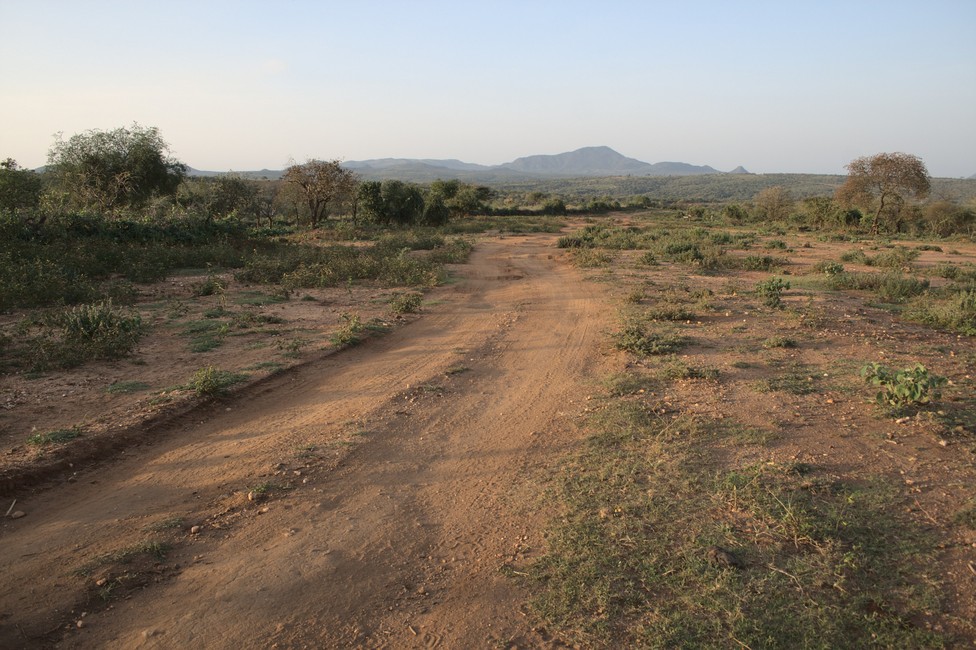
The track is not bad, the red soil in the dry state can be well traveled, but when it rains, these slopes are huge slides and muddy.
We meet the first Hamer – women, very friendly people with always a smile on the lips. A strong contrast to the Mursi.
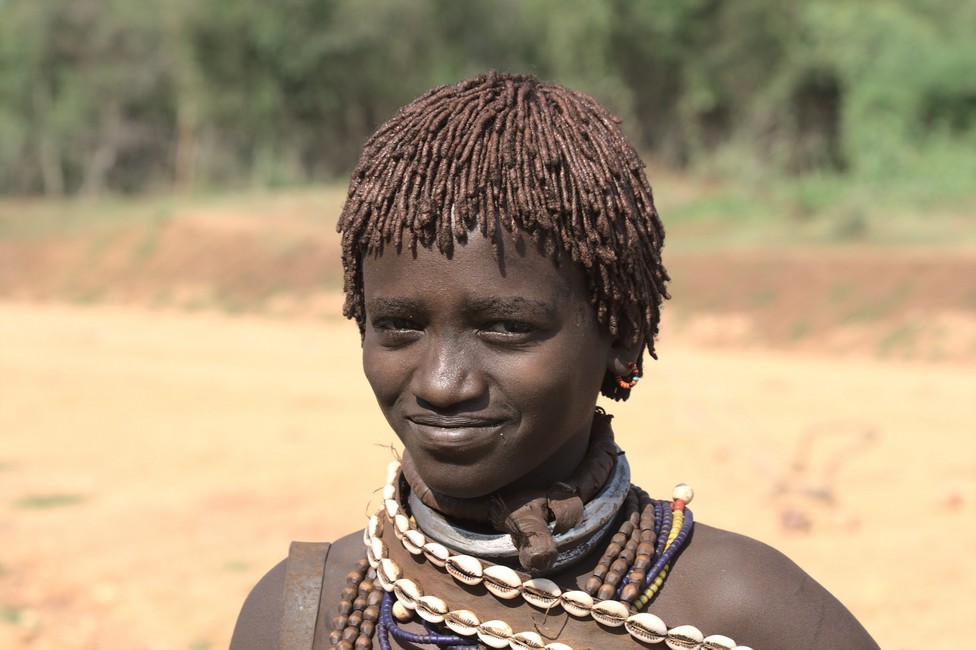
We stop, of course, two different cultures, but just as curious as we, are the Hamer – women. We say goodbye and soon arrive in Turmi.
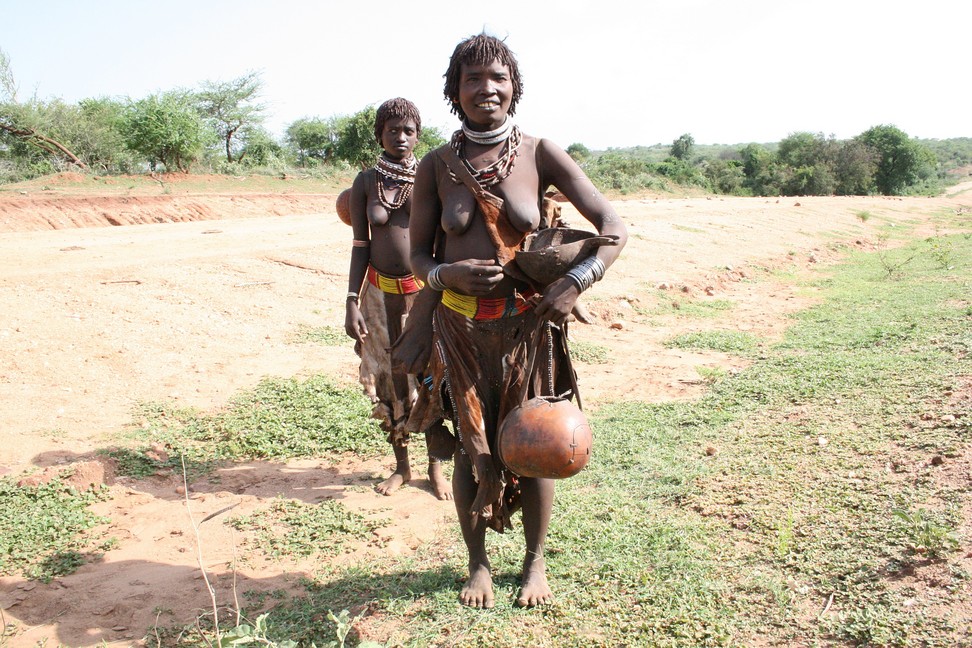
In Turmi the market has already started, we leave the car at the campground, and walk to the market. The ethnic mix is interesting. We plunge into the crowd and enjoy.

There are all sorts of things here to buy. Fresh fruit and vegetables are offered by Karo women.
The market stalls are kept simple, a few wooden poles and a piece of fabric roof and finished is the market stall.

The Karo people are a very small tribe, it is estimated that there are only about 1,000 tribal members left. They are closely related with the Hamer, what makes their differentiation difficult. Originally they were ranchers, but they have lost, due to anthrax disease, most of their animals, and today they live mainly from agriculture. Also, they are notable for body painting. Also significant is the headdress of men.
On the market there are also many utensils and jewelry to buy, jewelry plays an important part in the lives of the Karos, but also an important part of the Hamer.

Numerous gourds can be found in different style, form and ornamentation. It is an everyday vessel in which milk, oil or cereal is stored.
There are wooden headrests, which are used as pillows.We can not imagine that this is comfortable, but must be good, because they are used in almost all of Africa.
And little fetish figurines may not be missed, otherwise it would be no African market.
For a while we watch a craftsman at the carving. He proudly shows us his art.
But not only we marvel, also we strange creatures are admired. We often wonder what they think about us, but our language skills do not allow for conversation. Too bad.

Of course they want to sell something, but we often get the impression that the sale is not in the foreground, but a welcomed reason to get in contact with us strangers, to see how we are and what we carry with us.
We are exhausted and go back to the shady campsite. It is a community campsite. It offers plenty of shade, fireplaces, and showers, the water from an old oil barrel is fed into the line. Simple and good.




